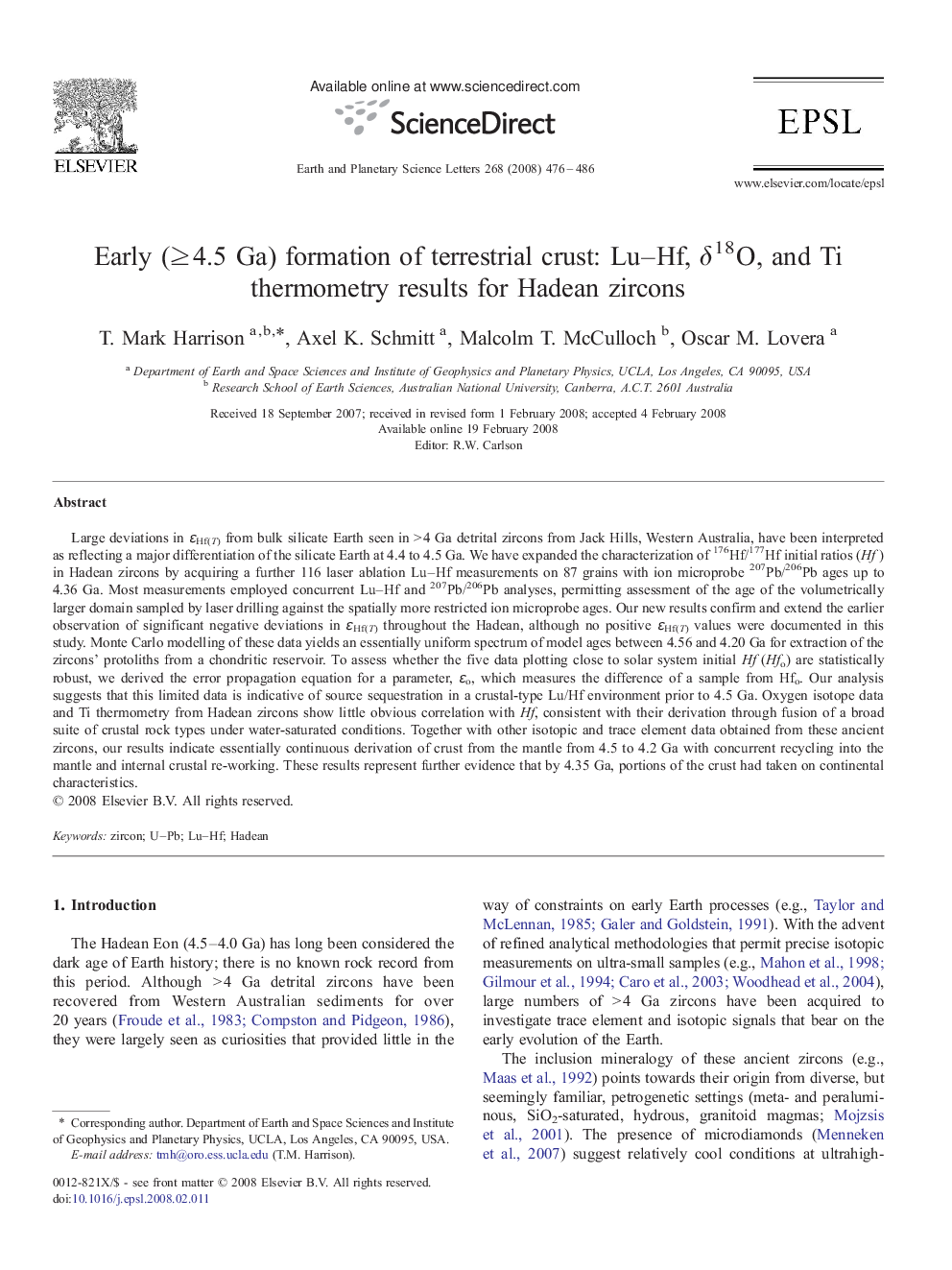| کد مقاله | کد نشریه | سال انتشار | مقاله انگلیسی | نسخه تمام متن |
|---|---|---|---|---|
| 4679827 | 1634898 | 2008 | 11 صفحه PDF | دانلود رایگان |

Large deviations in ɛHf(T) from bulk silicate Earth seen in > 4 Ga detrital zircons from Jack Hills, Western Australia, have been interpreted as reflecting a major differentiation of the silicate Earth at 4.4 to 4.5 Ga. We have expanded the characterization of 176Hf/177Hf initial ratios (Hf) in Hadean zircons by acquiring a further 116 laser ablation Lu–Hf measurements on 87 grains with ion microprobe 207Pb/206Pb ages up to 4.36 Ga. Most measurements employed concurrent Lu–Hf and 207Pb/206Pb analyses, permitting assessment of the age of the volumetrically larger domain sampled by laser drilling against the spatially more restricted ion microprobe ages. Our new results confirm and extend the earlier observation of significant negative deviations in ɛHf(T) throughout the Hadean, although no positive ɛHf(T) values were documented in this study. Monte Carlo modelling of these data yields an essentially uniform spectrum of model ages between 4.56 and 4.20 Ga for extraction of the zircons' protoliths from a chondritic reservoir. To assess whether the five data plotting close to solar system initial Hf (Hfo) are statistically robust, we derived the error propagation equation for a parameter, ɛo, which measures the difference of a sample from Hfo. Our analysis suggests that this limited data is indicative of source sequestration in a crustal-type Lu/Hf environment prior to 4.5 Ga. Oxygen isotope data and Ti thermometry from Hadean zircons show little obvious correlation with Hf, consistent with their derivation through fusion of a broad suite of crustal rock types under water-saturated conditions. Together with other isotopic and trace element data obtained from these ancient zircons, our results indicate essentially continuous derivation of crust from the mantle from 4.5 to 4.2 Ga with concurrent recycling into the mantle and internal crustal re-working. These results represent further evidence that by 4.35 Ga, portions of the crust had taken on continental characteristics.
Journal: Earth and Planetary Science Letters - Volume 268, Issues 3–4, 30 April 2008, Pages 476–486